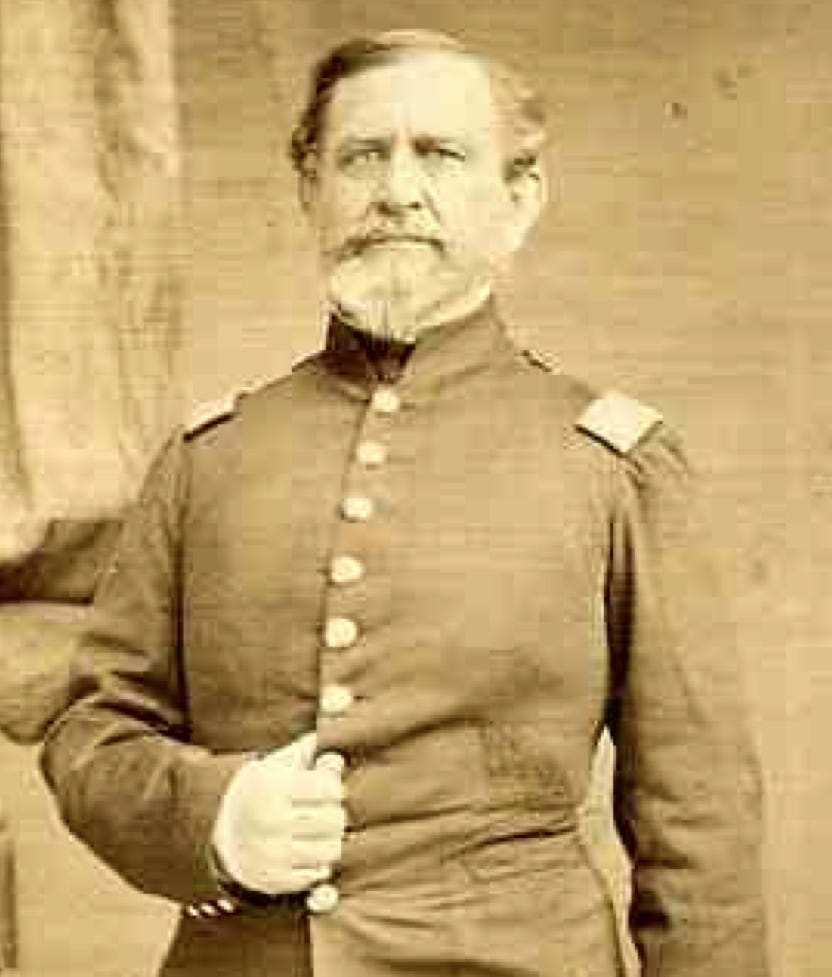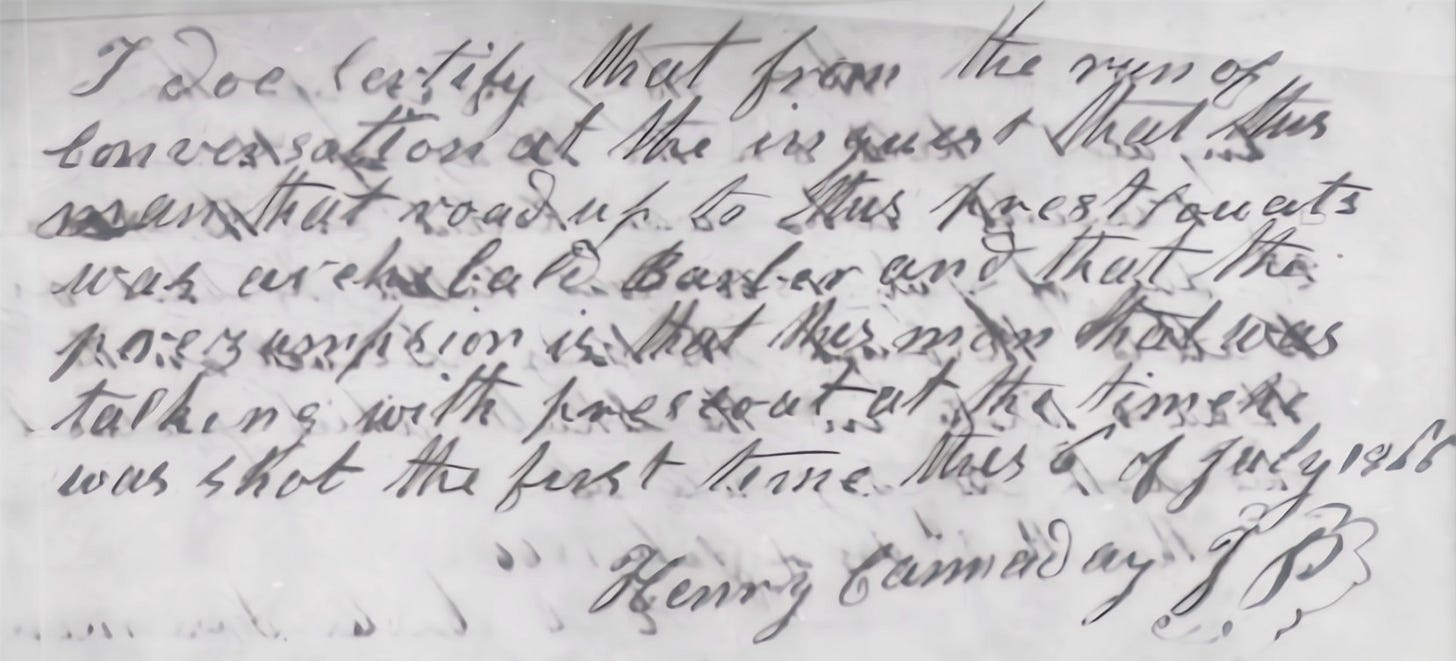A Vexing Murder During 'Reconstruction'
Celebrating Clay County History

By CLAY COUNTY ARCHIVES CENTER
It was 1866, and Colonel John T. Sprague, the military governor of Florida at that time, was getting tired of dealing with the shenanigans going on in Clay County. It was the area’s first year of the Reconstruction era, and lawlessness was the status quo for Northeast Florida. Cattle rustling, assaults and larceny were way too common.
The Ku Klux Klan had pulled off a particularly brutal home invasion in the McCrae area, and it took a ridiculous amount of time to bring them to justice.
This time the lawlessness involved a murder—the murder of Hiram Prescott on May 17, 1866. The colonel leaned forward in his chair and penned a letter to the powers-that-be in Clay County. He wrote to Barney McRae, clerk of court and clerk to the County Commissioners:
“It has been reported, a man by the name of Prescott, living in Clay County, has been killed, and that Archibald Barber, and a man by the name of Daniels are the perpetrators.”
Was the “man by the name of Daniels” that Sprague was referring to Elam Daniels, the former and very first sheriff of Clay County?

Generations have heard this story and read about it in the county’s historical tome, Parade of Memories: A History of Clay County, Florida. The book specifically names Elam Daniels as the person about whom Sprague was referring. Sprague went on to mention that the coroner’s inquest indicated that on July 2, 1866, the victim was shot in the head, and that the shooting happened in front of his home.
Sprague went on to detail how he would arrest the perpetrators himself and hold the men on the coroner’s inquest in custody until Clay County could give him certain assurances that they would carry out the law themselves. Clerk of the Court McRae wrote back on July 19, 1866:
“I have the honor to acknowledge the receipt of your order of the 11th last with regard to the death of one Hiram Prescott of the County in reply to which I will say that the supposed perpetrator of the deed would have been brought to justice in this had not Prescott’s brother-in-law said that he had placed it entirely in the hands of the military. But, as I perceive that he has not, I will assure you that the proper steps shall be taken to bring the parties to justice.”
So, who were Hiram Prescott and Elam Daniels? And what about this Archibald Barber fellow? Why would they want to kill Prescott? Was it even Elam Daniels?
Hiram Prescott, a farmer, was originally from Georgia and was a few years younger than Elam Daniels. It is unknown if he sympathized with “the cause” or if he was just a sharp businessman. It is family lore that he served in the Civil War, but no records have been found to corroborate this long-held belief. At the time of Hiram’s murder, he was married to Elizabeth Hannah Knight and had four children. He lived in Magnolia, just north of what became Green Cove Springs. He was only 40 years old.
Elam Daniels was Clay County’s very first sheriff, serving from 1859 to 1863. He was also from Georgia. He served in the Seminole Wars and mustered into Dancy’s Florida Mounted Militia from November of 1840 to 1841. He lived in Thomasville, which was once located on today’s Camp Blanding. He was married to Jency Sullivant and had four children. His daughter went on to marry Sheriff James Elam Weeks.
But rewind to June 1866. The descendants of Elam Daniels—quite a few in Clay County—maintain that Elam was murdered in June of 1866. His body was never found, so it is uncertain if that is the case. It seems he had enemies. Supposedly, he went into town to meet a relative and was gunned down along the Trail Ridge in Clay Hill. Per family lore, the perpetrators of this murder were later killed by some of Elam’s family. So far, there is nothing linking him to the murder of Hiram Prescott.
Who was this Archibald Barber fellow? A search of genealogical records has brought a possible suspect to light. In 1860, one Archibald Aaron Barber was living in New River County, now Bradford County. His spouse was Martha Ann Geiger. He was born in 1833, which placed him at the right age to be a peer of Hiram Prescott.
During the Civil War, Barber was a prisoner of war for almost two years. One family tree related a story that Barber had been tried three times for murder and was acquitted each time. He also allegedly shot a lawman during Reconstruction. Could that have been Elam Daniels? We may never know the truth, as there isn’t enough evidence out there.
Travel forward to July 6, 1866, the day of the coroner’s inquest. Justice of the Peace Henry Cannaday noted:
“I do certify that from the run of the conversation at the inquest that this man that rode up to Mrs. Prescott’s was Archibald Barber and that the [illegible] assumption is that this man that was talking with Prescott at the time he was shot the first time. This 6th day of July 1866.”
Notice there is no mention of Elam Daniels at the coroner’s inquest. Where did Colonel Sprague get the name from then? Why does the Parade of Memories book express that Sprague was talking about Elam Daniels?
Move forward to June 30, 1873. It is still the Reconstruction era and Hiram’s widow, Elizabeth Hannah Knight Prescott, came to town to settle her husband’s estate. Probate Judge Ozias Buddington threw out all the paperwork. Apparently, the legal system was still not functioning properly. The bond for her administration of the estate was insufficient when it had been originally issued in 1867. It was also signed by Clerk Barney McRae, who would later be indicted for losing court records when the county seat moved to Green Cove Springs. Rumors ran rampant.
In revoking her letters of administration, Buddington found that “there being no sheriff at present in Clay County I do appoint Mathew A. Knight as a proper and decent person to take charge of said estate.”
You read that right, there was no sheriff in office to act as administrator, which was the practice of the day. Henry Bradford was supposed to be that sheriff, but there was no telling what was going on with him at the time. Mathew Knight was a relative of Elizabeth Prescott.
Has myth been accepted as fact for nearly 157 years? The moral of the story here is: 1) do your own research and 2) don’t believe everything you read.
This account was gleaned from the Florida Memory website, through ancestry.com, “Parade of Memories,” the Florida Times Union, Findagrave.com, the National Archives, Fold3.com, Hiram Prescott’s probate file and in subject files maintained locally at the Archives Center.


